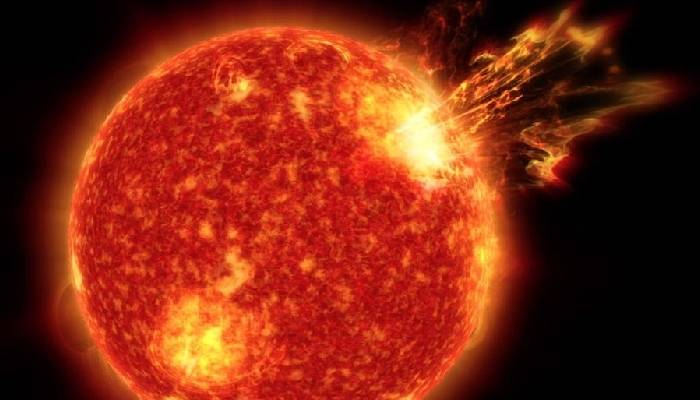
The Sun has recently released some of its strongest flares, heading straight to Earth, potentially leading to observable effects on our planet.
According to the NOAA's Space Weather Prediction Center an X1.3 and an X1.2 flare erupted from active sunspot cluster AR 3663, at 0601 and 1154 UTC on May 5, 2024.
Each flare caused a radio blackout on Earth, and we might notice ongoing effects if there were any coronal mass ejections (CMEs) that sent charged particles towards us.
While, the UK Met Office mentioned that they didn't see any obvious CMEs heading our way.
However, the coronagraph technology used to see CMEs is currently either unavailable or limited.
Meanwhile, there are nine groups of sunspots on the side of the Sun facing Earth, with one group, AR 3663, being the most active.
It appeared on 30 April and has to date emitted 14 M-class flares and 3 X-class flares, the second most powerful flares the Sun can produce.
Moreover, scientists predict that more M-class flares will emerge from the region, and maybe another X-class or two, before it rotates to the far side of the Sun, away from Earth.
Understanding solar flares and coronal mass ejections (CMEs)
Solar flares are big bursts of plasma on the Sun's surface, caused by magnetic field lines snapping and reconnecting over sunspots, which are temporary areas of strong magnetic fields.
These flares send out X-ray and ultraviolet light that can hit Earth's ionosphere, causing short-term radio blackouts.
Sometimes, a solar flare comes with a CME, which is a huge blast of plasma and magnetic field from the Sun into space.
Meanwhile, when a CME reaches Earth, it hits the planet's magnetosphere, creating electric currents that can affect power grids, leading to blackouts.
Additionally, it can also affect satellites in space, requiring adjustments, and mess with radio and navigation signals.
















